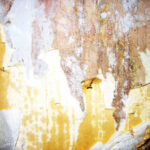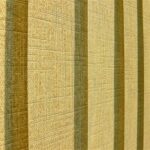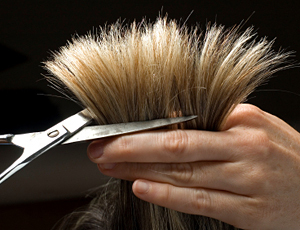Removing wallpaper sounds simple but it can turn out to be a grueling task. If you are ready to try your hand at wallpaper removal, read the following tips to guide you along the way.
Wallpaper Removal Tip #1-Know Your Walls
Your wallpaper situation may not be the same as your Mom’s; just because removing wallpaper was easy on her walls does not mean it will be easy on yours. If your wallpaper is on good/intact with only one layer present, you may not want to remove your wallpaper at all.
I have seen builders get rushed (or lazy) and apply wallpaper directly to sheet rock without any type of primer. When they do this, the usually use heavy duty wallpaper glue and when you go to strip the wallpaper you end up pulling down some of the sheetrock.
If this is your situation, you can apply 1-2 coats of wallpaper primer (I prefer Shieldz) over the existing wallpaper. This primer will cover the paper and stop any color from bleeding through to the new wallpaper or paint that you put up. Wallpaper primer also makes it easier for you to put on new wallpaper as it allows the paper to slide into place better. I prepare all walls with Shieldz primer before I do any wallpapering projects.
If your wallpaper is more than two layers thick or is falling down in place, I would recommend going ahead and removing the wallpaper.
Wallpaper Removal Tip #2 Using Dif Correctly
Dif is a wallpaper stripper that is a chemical which works at releasing the glue bond to allow the wallpaper to come off of the wall. I recommend using Dif for removing wallpaper and I have personally used it several times in the past and have recommended it for years. The key to using Dif when removing wallpaper is to make sure you are using it correctly.
First, use your scoring tool (one brand is Papertiger) to put holes all through the wallpaper. The more holes you make the more Dif can get behind the wallpaper and penetrate the wallpaper paste to aid in wallpaper removal. So don’t be shy, score away. I recommend buying Dif gel (unless you are removing wallpaper in the whole house which could be costly) because it is thicker and goes where you want it to. Use a paint roller and generously apply Dif all over your existing wallpaper. Wait 20 minutes and scrape away.
If you have problems areas when removing wallpaper, you can reapply and try again. If you notice wallpaper glue residue on the wall when you are done; just reapply some Dif, wait 20 minutes and scrape it off. I think you will find that Dif works better for removing wallpaper than the home remedies of laundry soap, vinegar, and the other ideas lurking around. If you are doing large areas, I would use the liquid Dif since it is concentrated and goes a lot further than the gel.
Wallpaper Removal Tip#3 Steamers Aren’t Expensive
If you don’t want to use chemicals or have tried chemicals and have not been satisfied, you can always use a steamer for wallpaper removal. You can purchase a steamer for $50 and up at your local home improvement store.
If you are going to use a wallpaper steamer to remove wallpaper, you will need to first score the walls just as you would when using Dif. Scoring allows the steam to get behind the wallpaper and aids in the ease of removing the wallpaper. The wallpaper steamer holds water which is heated up to produce steam which softens the wallpaper glue allowing you to scrape it off easier. Read the directions that come with the wallpaper steamer that you are using. You usually hold the hot plate end (where the steam comes out) against the wall for several seconds and then scrape with your tool.
I would buy a steamer if I was going to do a whole house project, remove wallpaper again at a later date, or thought my friends or family may need to use it. If I did not think I would need a wallpaper steamer for any of those reasons, I would stick with Dif wallpaper removal gel.
Wallpaper Removal Tip #4-Prepare Your walls
Whatever you plan to do after you have completed your wallpaper removal, remember to prepare your walls for whatever comes next. Use a primer that is designated for your project; if you are going to paint use a paint primer and if you are going to wallpaper again then use a wallpaper primer. Primer will seal in any remaining color and protect your wall in case you decide to change it again in the future.






